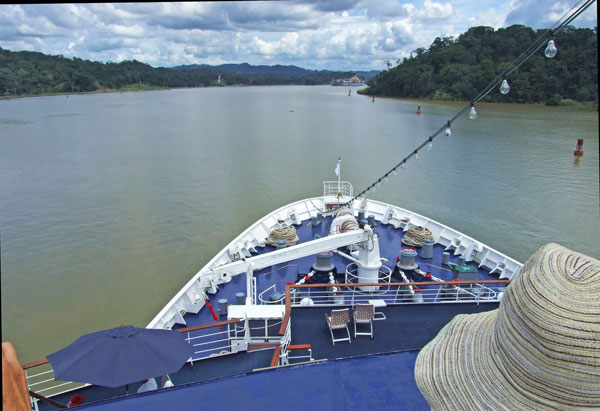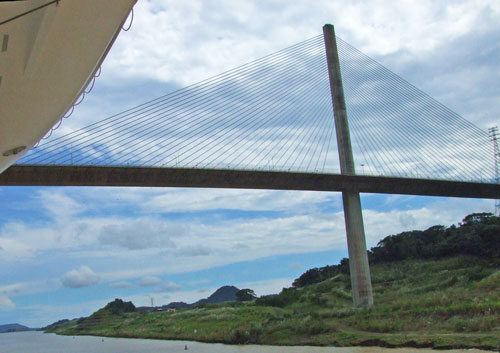Day 50 ![]()
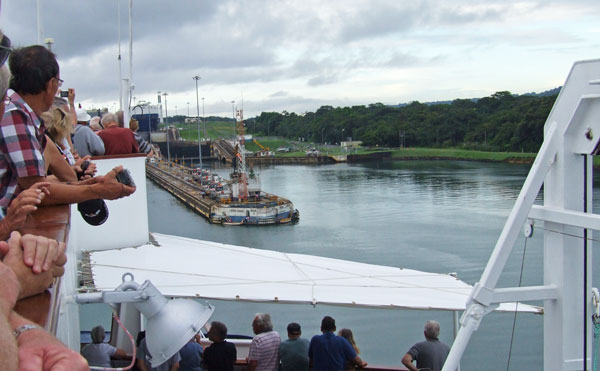
If we had proceeded at our usual speed as we neared Cristobal, we would have been half way through the Panama Canal before any passengers had woken up. Luckily, the captain reduced speed and cruised gently and gracefully towards this interesting spectacle so that we entered Limon Bay at about 7am and stopped, waiting to enter the canal.
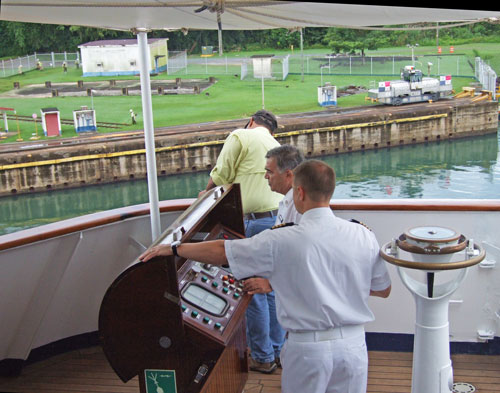
The pilot came on board. This small stretch of water is the one place where the captain is not in charge of the ship. Traversing The Canal, the Canal Authority Pilot is in command and orders all the instructions with regard to the ship’s operation.
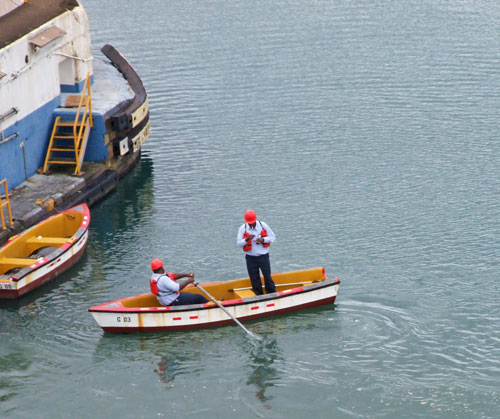
We glided up to the entrance of the first set of locks: the Gatun Locks, at about 8am. A small rowing boat came up to the starboard bow and took on a line from the ship. The dinghy then returned to the side of the lock where the line was attached to a waiting Mule: an electric towing locomotive. A line was also passed from the port bow to a Mule on the other side of the lock. Both machines swung into action and we proceeded into the lock and stopped.
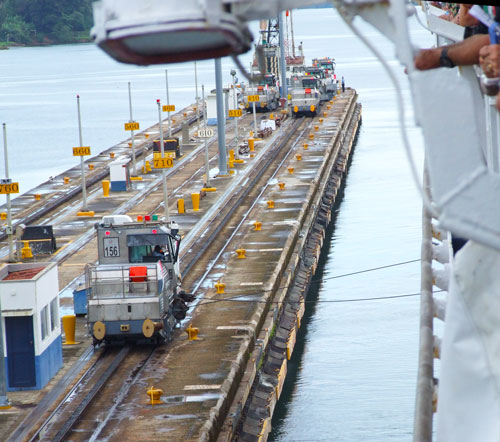
The technological system which comprises the Panama Canal is fascinating and intriguing. The history is relatively well known. The different attempts and approaches used by the French and then the United States; the mighty problems encountered; the many thousands of deaths of workers; the conflicts and intrigues around its acquisition and ownership. As we progressed through the Canal we were informed and entertained by a Canal Authority Guide who outlined these interesting details. She also pointed out features of the surrounding land. If you make the passage, or have made the passage, you will become familiar with these facets.
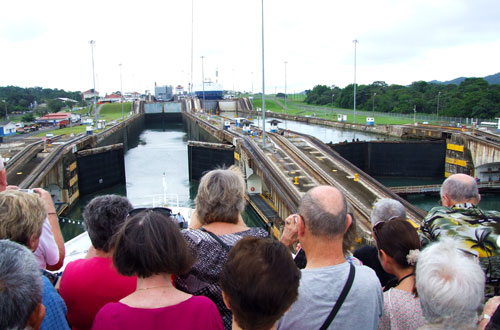
For me, the technology of the system was my greatest fascination. Remember the project was started in the late 1800s and the first ship progressed through in 1914. There were certainly no integrated circuits involved in its development.
Many river locks raise boats by closing off the flow of the river, letting the boat enter the lock, opening faucets in the opposing gate to let water in or out and to raise or lower the boat. Then the opposing gate is opened and the boat continues on its way. The natural flow of the river fills the lock, and then the locks empty into the river after being filled.
However, the Panama Canal is not on a river. It is not a waterway flowing from mountains out to the sea. And, while it is a cut between two oceans, it is not a direct cut. The mountains proved too difficult to slice through, so it was necessary to flood a large area of land near the Atlantic coast so as to raise the level of the whole system thus requiring less cutting through mountains.
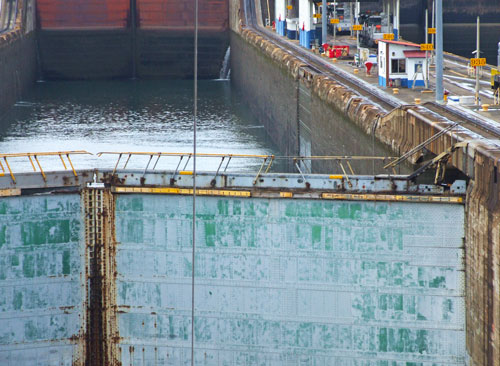
The Locks at each end of the Canal are in fact a set of 6 locks. Two lanes of locks with three locks for each lane. Each lock raises ships by allowing water from the adjacent lock to flow through into the lock by underground pipes while the following gate is closed to stop the water from flowing away. No pumps are used, gravity allows the water to flow until it finds its own level and then gates are opened and closed, the ship moves forward, gates are closed, water flows through underground pipes and a giant steel ship weighing thousands of tonnes is raised smoothly and effortlessly up and down over 25 metres.
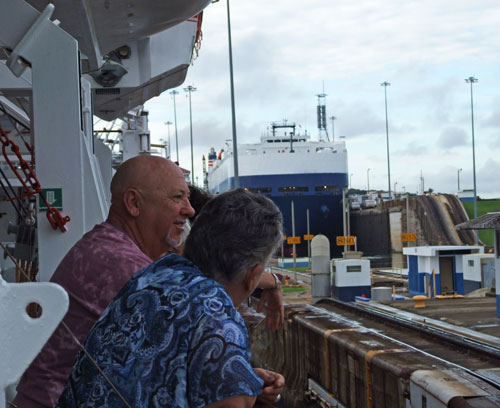
While one ship is moving through the locks from the high end, another is moving up from the low end. The operation is synchronized to keep dozens of giant ships moving through at a steady and very efficient pace. Not only that, but much of the water flowing our of one lock to lower one ship is reused into the lock in the other lane to raise that ship.
It’s all very clever, very well organized and provides a wonderful service with seeming ease and efficiency. I did enjoy transiting the canal, as, it seems, did the other ‘older guys’ lining the decks as we sailed through.
